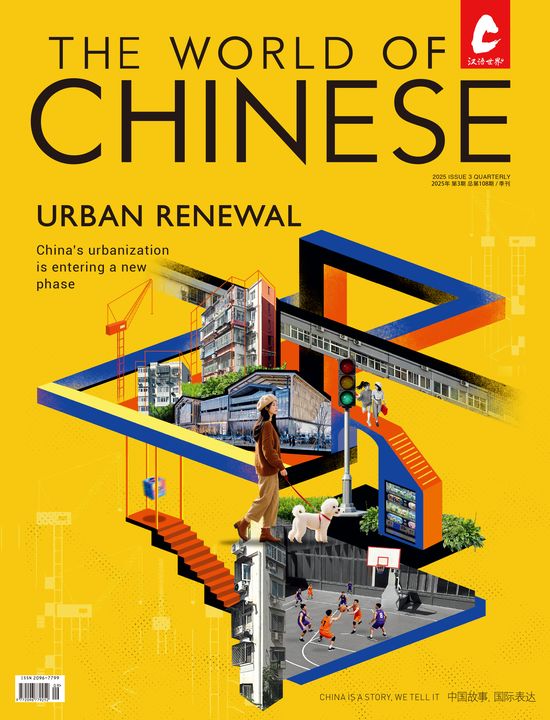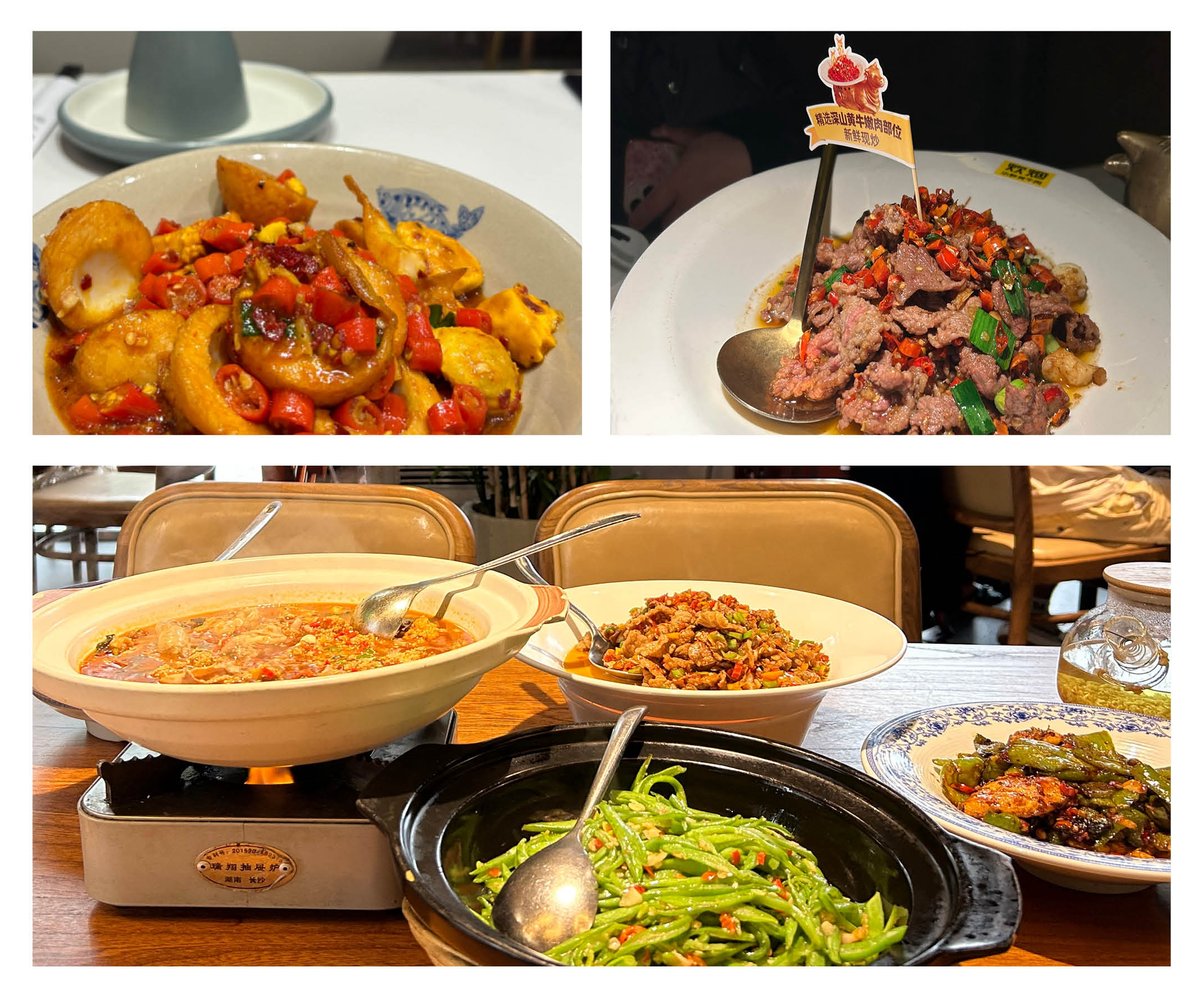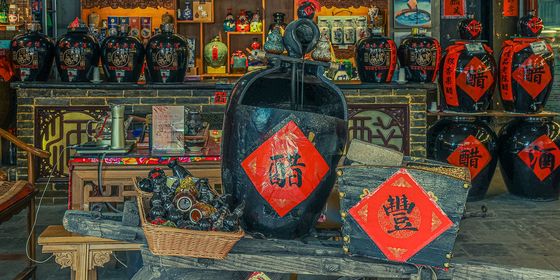Known for its spicy, stir-fried dishes, Hunan cuisine has enjoyed a surge in popularity in recent years, but not everyone is happy about it
At 9 p.m. on April 1, half an hour before her train arrived in Beijing, food blogger “Zhengqi Kong” opened a food delivery app and ordered several dishes from Hunan restaurant Xiaoxiangge so that they would be waiting for her at her accommodation. Despite the late, spicy, and oily dinner going against everything she knows about maintaining a healthy diet, eating Hunan food when traveling in and out of Beijing, as well as frequenting the capital’s Hunan restaurants, has become something of a ritual for the 28-year-old over the last several years.
“I don’t eat Xiaoxiangge every day, but if I don’t eat there for a while, I start to miss it terribly,” the blogger surnamed Kong, a native of eastern China’s Shandong province, explained to her more than 150,000 fans on the microblogging platform Weibo.
Kong is not alone. Xiang cuisine (湘菜), hailing from central China’s Hunan province and best known for its punchy, fresh spice and stir-fry cooking style, has become a hit around the country in recent years, especially among younger diners. On Weibo, the hashtag “How delicious is Hunan’s Xiang cuisine” has garnered over 160 million views and 36,000 discussions, while the lifestyle app Xiaohongshu features more than 890,000 posts on the topic.
Xiang cuisine’s national spread over the last two decades reflects the migration of Hunanese around the country. The 2020 national population census by the National Bureau of Statistics showed that over 18.7 million Hunanese worked outside of the province, accounting for 28.3 percent of its entire population. Accordingly, thousands of Hunan restaurants now dot China’s major cities. In Shanghai, the Hunan government boasted that the number increased from around 20 in 2006 to over 5,000 in 2021, while in Shenzhen, Jiuxing Travel, published by New Weekly magazine, counted over 7,000 Hunan restaurants.
Hunan cuisine is now so popular that it has become the country’s favorite regional food. According to the Development Report on Xiang Cuisine released last September by Guangzhou-based catering industry platform Canyin88, there were over 118,000 Hunan restaurants in China in 2023, accounting for 15.6 percent of all regional-cuisine chain restaurants and surpassing that of the former most popular Sichuan cuisine (14.7 percent), and Guangdong cuisine (11.7 percent). Last year alone, the market value of the Xiang cuisine industry was estimated to be 226 billion yuan, up from 208 billion yuan in 2019.
Learn more about China’s food and regional cuisines:
- Hot and Spicy: How Malatang Conquered China
- Stripped Down: The Story Behind China’s Favorite Snack
- Prepared to Fail: Cafeterias and Restaurants Face Backlash for Pre-Made Meals
Zhai Caixing, a Hunan native who has lived in Beijing for six years, only realized that her hometown’s food was so popular elsewhere after seeing two large advertisements for Hunan restaurants in Shanghai’s subway during a business trip there in 2021. The following year she learned from a friend about the restaurant chain Xiaoxiangge, founded in Beijing in 2012 and dubbed the capital’s “top Hunan restaurant” by its fans. She often has to wait “one or two hours” in line before dining at either Xiaoxiangge or Chef Fei, another popular Xiang cuisine chain that opened in Beijing in 2022. Now both chains have over a dozen stores in the city.
Since becoming a fan of Xiang cuisine via Xiaoxiangge in 2021, blogger Kong recalls how she soon came across information about Xiang cuisine “everywhere” on Weibo and Xiaohongshu. For her, Xiang cuisine stands out for its simple ingredients and its emphasis on “seasoning and heat control” during cooking. “It is relatively sour and spicy, which stimulates the appetite…and it’s xiafan [下饭, ‘rice-improving’]; one can rarely have Xiang cuisine without rice. Nowadays, many people focus on fitness and dieting, often eating light foods like salads, which can be quite bland. In contrast, Hunan cuisine is extremely satisfying,” she explains to TWOC.
Liu Ke, a Hunan native who works in Shanghai, agrees. “When I’m really hungry, I crave flavorful dishes, and Hunan cuisine is perfect for that. With only one tasty dish, you can easily eat two or three bowls of rice, and it provides a sense of satisfaction that bland, watery foods can’t.” Liu juxtaposes this with the light and sweet cuisines of Shanghai and the neighboring provinces of Jiangsu and Zhejiang, which have come to dominate her company’s canteen. “Work is already monotonous enough, so I need something to excite me,” the 26-year-old says.
The comparatively low price of Hunan food has also contributed to its rise. Around 75 percent of restaurants surveyed in Canyin88’s report cost between 50 and 80 yuan per person in 2023, and the preference for more humble meals reflects the trend of “consumption degradation” caused by the post-pandemic economic downturn.
“What makes Hunan cuisine delicious is that it is stir-fried on high heat; it requires a chef, an open flame, and several big woks with many fresh spices…Some people may also seek out Hunan cuisine as a protest against pre-cooked meals due to the belief that it must be fresh,” Liu reasons, a reference to people’s aversion to the pre-prepared dishes, known as yuzhicai (预制菜), that proliferated during the Covid-19 pandemic.
Some Hunan restaurant brands have played up this adherence to freshness by installing open kitchens, allowing diners to watch chefs as they prepare the ingredients and cook dishes. Chef Fei goes as far as to serve their signature “stir-fried pork with chili” dish in a wok, and even stopped offering take-out, as to “solve the problem of the lack of taste in delivery dishes...and provide customers with a better dine-in experience.”
Despite its rise to national dominance, many Hunan locals like Zhai and Liu, who work and live in other provinces, hold complicated feelings about the popularity of their local cuisine, especially renditions by popular brands.
Liu, who has never gotten used to Shanghai cuisine and would often spend weekends and holidays trawling the city in search of good Hunan restaurants, was full of hope for the opening of Xiaoxiangge’s first Shanghai store in April last year. However, after waiting three hours on opening day, she decided the food was not worth the wait and swore never to return to this Beijing-founded “top Hunan restaurant.”
“I was severely disappointed,” Liu complained on Xiaohongshu. “I kept seeing Xiaoxiangge touted as the pinnacle of Hunan cuisine in Beijing, so as a Hunan native, I came with high expectations. The two dishes [I had] tasted exactly the same…and having the same taste made it hard not to think of pre-prepared dishes.”
Zhai had a similarly disappointing experience at Xiaoxiangge in Beijing. “All the dishes tasted the same because they all used the same seasoning,” she recalls, adding that Xiaoxiangge’s homogenous “spicy and salty” flavoring reflected “a very narrow understanding of Hunan cuisine.” She added that it indicates they may be catering to a common stereotype outsiders have about Xiang cuisine—that it relies on millet pepper. “In fact, Hunan cuisine features abundant chili varieties, from preserved chopped peppers and millet pepper to local green peppers, all used in different dishes. It’s spicy…but has moderate flavors, somewhere between heavy and light.”
Liu agrees: Instead of the aromatic, fresh, and spicy cuisine loved by Hunan natives, many restaurants outside of the province often emphasize “artificial” flavors for the sole purpose of meeting preconceived notions of what Xiang cuisine should be. On a food-themed reality show on Hunan’s local TV station last summer, Wang Moquan, an 80-something nationally recognized Xiang cuisine master, also lamented this deepening trend. “Traditional Xiang cuisine should consist of 20 percent spicy and 80 percent non-spicy dishes,” he said.
In fact, it’s believed the nation is growing increasingly addicted to the feeling of spice. According to a 2023 report by food-delivery giant Meituan, over 60 percent of respondents liked eating spicy food, including 24 percent who said they “loved it,” while less than 7 percent expressed their dislike. Meanwhile, nearly 80 percent of restaurants on the platform sold spicy food, including 36 percent categorized as Hunan and Sichuan restaurants.
Some restaurants that originally touted themselves as serving Xiang cuisine are starting to integrate other regional dishes to temper the powerful flavors. Chef Fei is a prime example, and for Zhai, it even no longer counts as a Hunan restaurant now that it serves dishes from Zhejiang, Jiangsu, and Guangdong. Meanwhile, Kong, a non-native, says she doesn’t care much about the “authenticity” of Hunan cuisine, just as long as it tastes good.
With some Hunan restaurants battling complaints on social media that they too have begun to use pre-prepared dishes, others face challenges related to upscaling, an especially common predicament encountered by Xiang cuisine brands due to their comparatively low prices and reliance on well-trained chefs and fresh ingredients. In that sense, as Hunan restaurants become increasingly popular, their purveyors stand at a crossroads: Do they spend more and stick to the traditions and flavors that have helped propel them to where they are today, or do they further adapt to local demands to the detriment of authenticity, making it a true national food.
Spice It Up: Why Hunan Cuisine Is Conquering China is a story from our issue, “Back to the Wild.” To read the entire issue, become a subscriber and receive the full magazine.
















